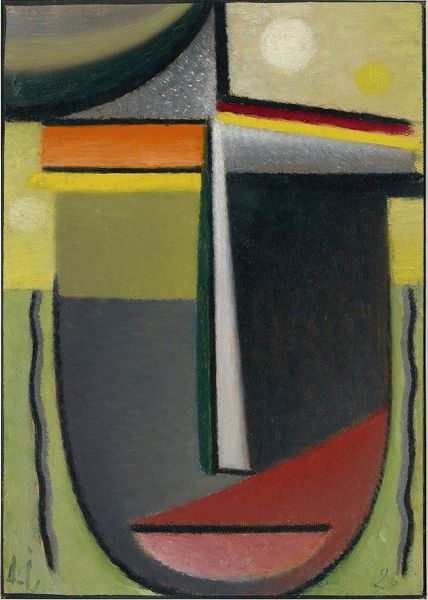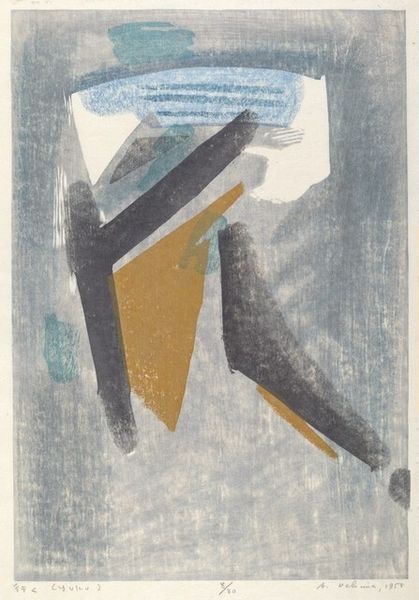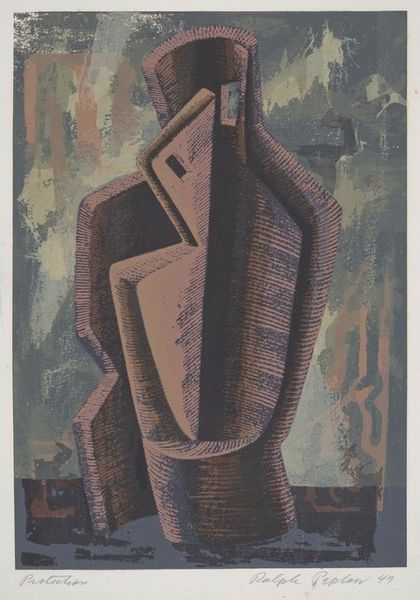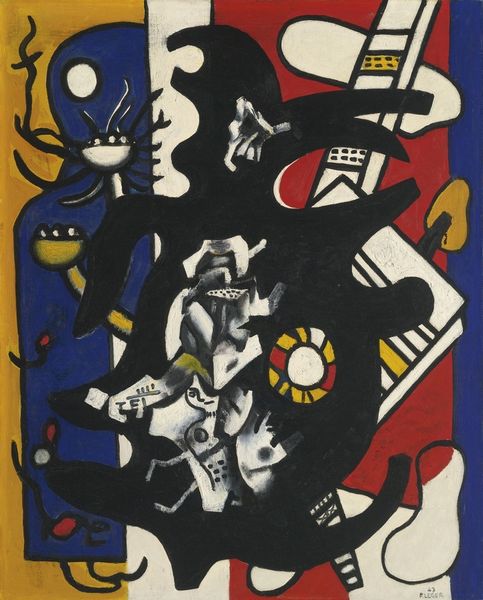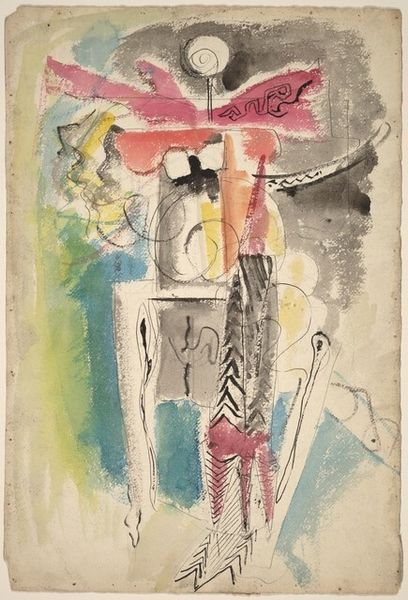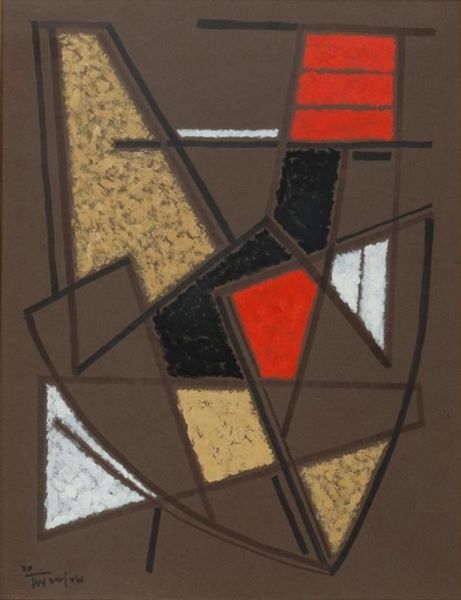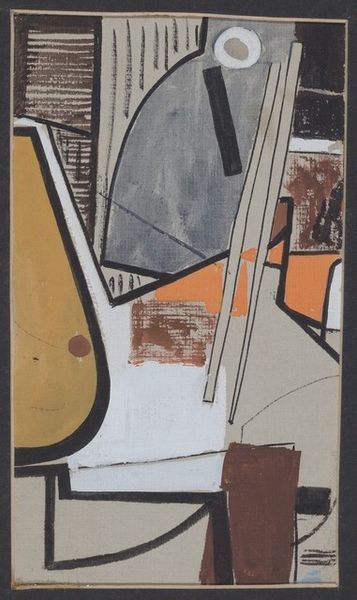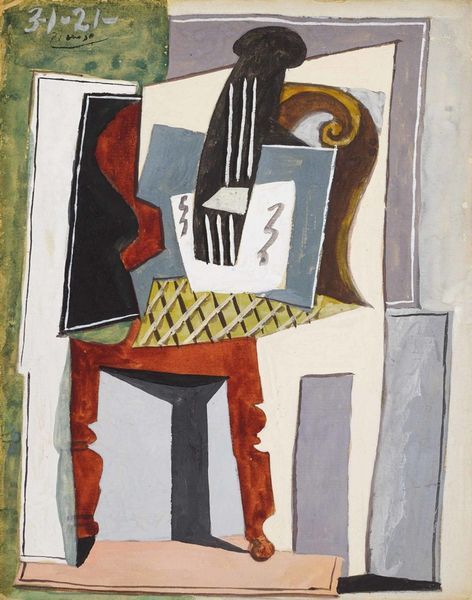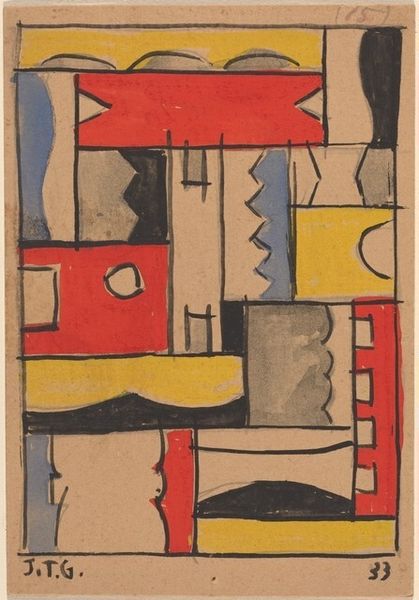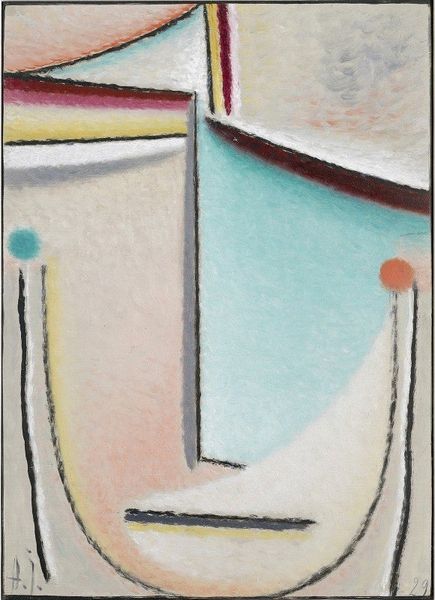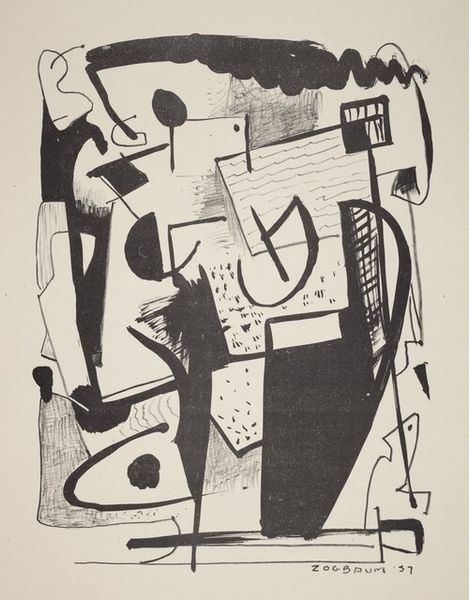
drawing, mixed-media, collage, paper
#
drawing
#
cubism
#
mixed-media
#
collage
#
paper
#
coloured pencil
#
geometric
#
abstraction
Dimensions: sheet: 33.8 × 20.2 cm (13 5/16 × 7 15/16 in.)
Copyright: National Gallery of Art: CC0 1.0
Curator: Welcome! We're looking at Picasso's "Still Life with a Glass and Ace of Clubs," created in 1914. It's a mixed-media work incorporating drawing, collage, and coloured pencil on paper, demonstrating his innovative approach to Cubism. Editor: First impression? Playful chaos. It feels like Picasso took a party, shredded it, and then meticulously glued it back together...slightly off-kilter, of course. The vertical lines really heighten the sense of an illusion within an illusion, like we're in a distorted funhouse. Curator: The use of collage is pivotal here. By integrating fragments of real-world materials like paper, Picasso challenges the traditional illusionistic painting. He brings the everyday into the realm of high art, provoking questions about representation and reality itself. Note also, this artwork was produced just as France entered World War I, and Cubism itself was entering a new chapter—one emphasizing a return to order. Editor: Order, you say? It’s like the objects are arguing amongst themselves! Seriously though, there's something so immediate about the drawn textures next to the pasted elements, especially the Ace of Clubs...like it's daring us to place a bet on this fractured world. The crude, hand-drawn lines suggest an ambivalence—Picasso understands the rules, but he's also actively breaking them, a quality amplified by the playful introduction of colorful drawing. Curator: Absolutely. This piece embodies Synthetic Cubism's move towards simplification and the construction of forms from abstracted elements. The ace of clubs, along with the glass, becomes not just a symbol, but a signifier embedded within the social and cultural fabric of the time, calling upon a traditional visual vocabulary rooted in Parisian nightlife. Editor: It's got swagger, that's for sure. The stripes, the card, the suggestion of a convivial moment... it’s also incredibly vulnerable. This composition feels precarious, like one wrong move and it all crumbles, just like our perception of things in the everyday. Curator: Indeed. In its seemingly simple arrangement, the work reflects the volatile sociopolitical conditions that formed the background for Picasso's formal explorations. A memento mori by other means. Editor: Agreed. And it reminds us that even in chaos, there's a strange kind of beauty—a beauty built on the fractures and the re-assembling of what's been broken. Thanks for highlighting that context. Curator: My pleasure. And thank you for the stimulating, poetic reading of Picasso’s visual strategies here.
Comments
No comments
Be the first to comment and join the conversation on the ultimate creative platform.

